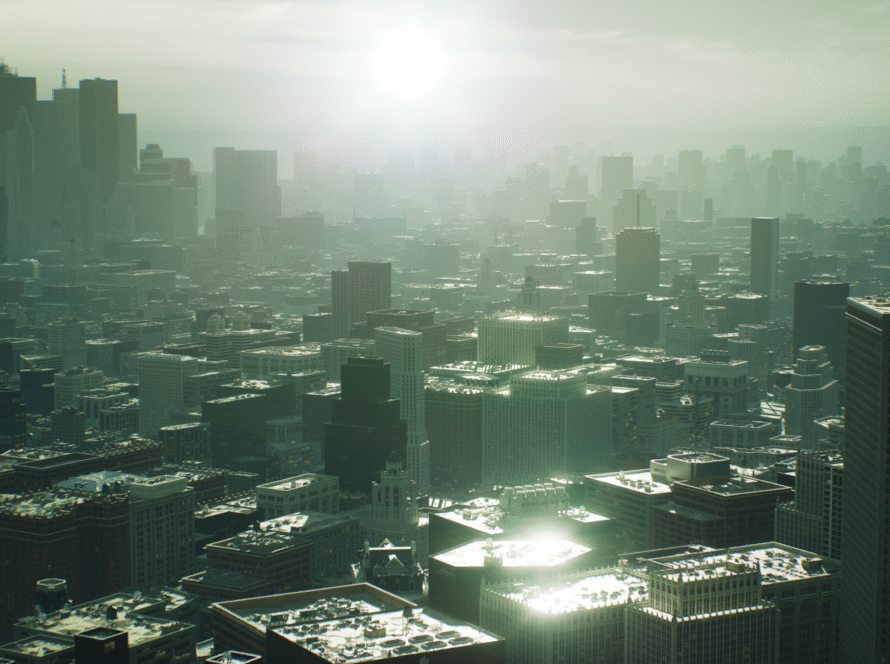For decades, architectural visualization was a game of patience. Hours, sometimes days, spent waiting for a single high-fidelity render. Endless iterations that felt like wading through digital molasses. Presentations confined to static images or clunky, pre-baked walkthroughs. But a seismic shift is underway, powered by an engine not born in an architect’s studio, but forged in the fires of AAA gaming: Unreal Engine 5 (UE5). This isn’t just an upgrade; it’s a paradigm shift, fundamentally redefining how we design, communicate, and experience unbuilt spaces. Here’s why UE5 isn’t just *a* future for ArchViz – it’s the future.
1. The Death of the Loading Bar: Real-Time Rendering Revolution
The most obvious, game-changing advantage? Real-time photorealism. UE5 obliterates the agonizing wait associated with traditional CPU-based rendering engines.
- Instant Feedback: Change a material, adjust the sun angle, swap furniture, or reconfigure a wall – and see the result instantly at near-final quality. This transforms the design process from linear and slow to fluid and iterative. Architects and designers can explore options rapidly, fostering creativity and better decision-making.
- Live Presentations: Imagine presenting to clients not with static slides, but by literally walking them through the photorealistic space in real-time. Answer “What if we move this here?” on the spot. The power to interact with the design during a meeting is unparalleled for client buy-in and collaboration.
- Democratization of Quality: Achieving high-fidelity visuals no longer requires massive render farms or prohibitive costs. A powerful workstation can now deliver stunning results interactively, making top-tier visualization accessible to smaller firms and individual artists.
2. Nanite: Taming the Geometry Beast
Historically, highly detailed architectural models (think intricate facades, complex furniture, lush landscaping with millions of leaves) brought visualization pipelines to their knees. Enter Nanite Virtualized Geometry.
- Import Anything: Nanite allows you to import film-quality source art comprised of millions or even billions of polygons directly into UE5. Think CAD models, intricate sculptures, photogrammetry scans of real-world materials – all without needing to painstakingly create optimized versions or bake normal maps.
- No More LOD Hell: Nanite intelligently streams and processes only the detail necessary for the current view, pixel by pixel. Say goodbye to manually creating Level of Detail (LOD) models and the visual “popping” that comes with them. The detail you see close up is the actual high-poly model.
- Unprecedented Detail & Scale: This unlocks visual fidelity previously impossible in real-time. Brickwork looks like real brickwork. Terrain is incredibly complex. Complex architectural details shine without performance penalties. It allows visualizations to truly reflect the intended materiality and craftsmanship of a design.
3. Lumen: Dynamic Light Like Never Before
Lighting is the soul of architectural visualization. Pre-baked lighting locked you into specific times of day and scenarios. UE5’s Lumen Global Illumination and Reflections is a game-changer.
- Fully Dynamic Global Illumination: Move the sun, turn on lights, open a virtual door – and Lumen calculates realistic bounced light, soft shadows, and color bleeding in real-time. This means you can showcase a space at dawn, noon, dusk, and night within seconds of each other, all with physically accurate light behavior.
- Realistic Reflections: Lumen provides stunningly accurate reflections, both specular and diffuse, on any surface, reacting dynamically to scene changes. Glass, polished floors, water features – they all behave as they should, adding immense depth and realism.
- Material Responsiveness: Materials interact realistically with Lumen’s dynamic lighting. Changes to material properties (roughness, metallicity) immediately affect how light bounces and reflects, allowing for precise material studies and presentations.
4. Building Immersive Worlds: Beyond the Floor Plan
Architecture doesn’t exist in a vacuum. UE5 empowers visualizers to create rich, immersive environments around the building.
- Open World Tools: UE5’s robust world-building tools, originally designed for massive game worlds, are perfect for creating expansive site contexts – realistic landscapes, surrounding buildings, dynamic vegetation (using tools like Foliage and the new PCG – Procedural Content Generation framework), and even traffic or pedestrian systems.
- Ambient Life: Easily add subtle animations – swaying trees, flowing water, flickering lights, even animated characters – to breathe life into visualizations, making them feel less like sterile models and more like glimpses into future reality.
- Cinematic Storytelling: UE5’s Sequencer tool (a powerful non-linear animation editor) allows for creating compelling cinematic flythroughs, dramatic reveals, and emotionally resonant narratives around the architecture, all rendered in real-time quality.
5. The VR/AR Gateway
Unreal Engine 5 is the undisputed powerhouse for immersive experiences.
- Seamless VR Integration: Creating compelling, high-fidelity Virtual Reality walkthroughs from a UE5 project is remarkably straightforward. Clients can truly “step inside” the design at 1:1 scale, experiencing the space, proportions, and lighting in a profoundly intuitive way that no render or video can match.
- AR Potential: UE5 provides the tools to explore Augmented Reality applications, overlaying designs onto real-world sites using mobile devices or AR glasses, facilitating on-site understanding and client presentations in context.
- Future-Proofing: As Metaverse concepts and persistent digital twins evolve, UE5 is positioned at the forefront. Architects creating visualizations in UE5 today are building assets that could seamlessly integrate into these future immersive platforms.
6. Twinmotion: The Accessible Powerhouse (Now Integrated!)
Epic Games’ acquisition and deep integration of Twinmotion into the UE5 ecosystem is a masterstroke. Twinmotion offers a streamlined, architect-focused interface layered on top of UE5’s power.
- Lower Barrier to Entry: For architects less familiar with complex game engines, Twinmotion provides a gentler learning curve while leveraging UE5’s core technologies (Lumen, Path Tracer).
- Rapid Workflow: Direct sync plugins with major CAD/BIM software (Revit, Archicad, SketchUp, Rhino) allow near-instant transfer of models into a stunning real-time visualization environment.
- Bridge to Full UE5: Projects started in Twinmotion can be opened directly in UE5 for those needing deeper customization or advanced features, providing a smooth pathway as skills develop.
7. A Thriving Ecosystem and Future-Proofing
- Constant Innovation: Epic Games pours immense resources into UE5’s development. Regular updates bring new features, performance improvements, and tools specifically beneficial to ArchViz (like improved CAD data handling, architectural material libraries, and dedicated ArchViz templates).
- Massive Community & Resources: UE5 boasts one of the largest and most active developer communities globally. Tutorials, forums, marketplaces (like the Unreal Engine Marketplace with thousands of assets), and dedicated ArchViz groups provide unparalleled support and resources.
- Free to Start: UE5’s royalty-free model (with a revenue threshold most ArchViz work won’t hit) makes it incredibly accessible for professionals and studios to adopt and experiment.
The Challenges? Let’s Be Real.
It’s not all magic. There is a learning curve, especially coming from traditional CAD or pure rendering workflows. Optimizing projects for different platforms (especially VR) requires knowledge. Hardware demands are significant (though increasingly manageable). And mastering the full depth of UE5 takes time. However, the investment is demonstrably worthwhile given the transformative power it unlocks.
Conclusion: Not Just Pixels, But Possibility
Unreal Engine 5 isn’t merely a tool for creating pretty pictures faster. It fundamentally transforms the process and potential of architectural visualization:
- From Static to Dynamic: Real-time interactivity replaces passive viewing.
- From Representation to Experience: It creates immersive, emotionally resonant experiences, not just visuals.
- From Lag to Leap: Iteration cycles shrink from days to minutes, accelerating design.
- From Isolation to Collaboration: Enables truly collaborative, interactive design reviews with clients and stakeholders.
- From Present to Future-Proof: Positions firms at the cutting edge of immersive tech (VR/AR/Metaverse).
The future of architectural visualization is no longer about waiting for renders to finish. It’s about stepping into the design, interacting with light and space, and experiencing the architect’s vision as if it were already built. Unreal Engine 5 provides the portal to that future. It’s not just changing the game; it’s redefining the entire playing field. For architects, designers, and visualizers ready to embrace it, the possibilities are as vast and exciting as the worlds they create. The future is real-time, immersive, and it’s powered by Unreal Engine 5. Are you ready to step inside?

